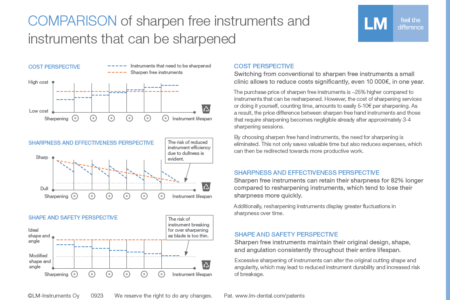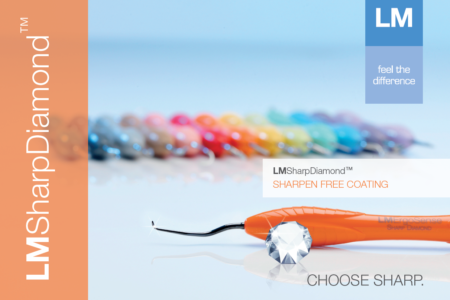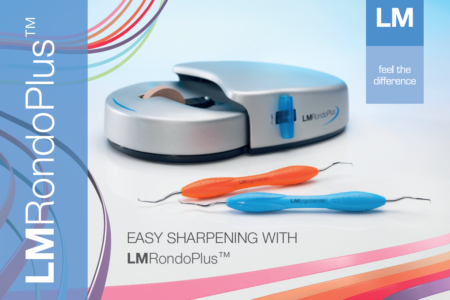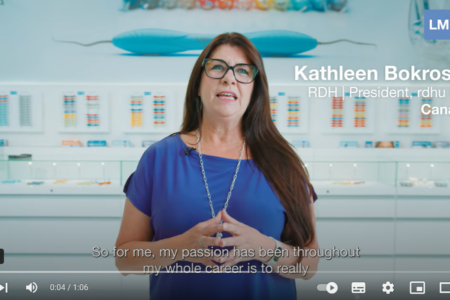
What to consider when choosing whether sharpen or use sharpen-free instruments?
Facts regarding sharpness of dental instruments
- The lifespan of a dental instrument typically ranges from 6 to 18 months, depending on usage frequency and handling techniques.
- To ensure optimal performance, most hygienists recommend sharpening instruments at least every two weeks. Prolonged use without regular sharpening can result in dullness and less effective work, leading to reduced patient comfort and satisfaction.
- A significant number of instruments are often used for longer durations than recommended, leading to diminished performance due to bluntness.
- While sharpening is crucial for maintaining sharpness, excessive sharpening can alter the original cutting shape and angularity, leading to reduced instrument durability and an increased risk of breakage.
- It is of outmost importance for hygienists to utilize instruments that are sharp, as sharp scalers not only minimize fatigue and ergonomic strain for hygienists but also lead to enhanced patient comfort.

Are your instruments sharp enough?
Sharpness of the instruments is the base of safe, efficient and pleasant treatment.
Are your instruments sharp enough, or is it time to resharpen or replace them?
Test it quick and easy!
Comparison of sharpen free instruments and conventional steel instruments that can be sharpened
The comparison includes three perspectives: sharpness and effectiveness, shape and safety, and cost perspective.
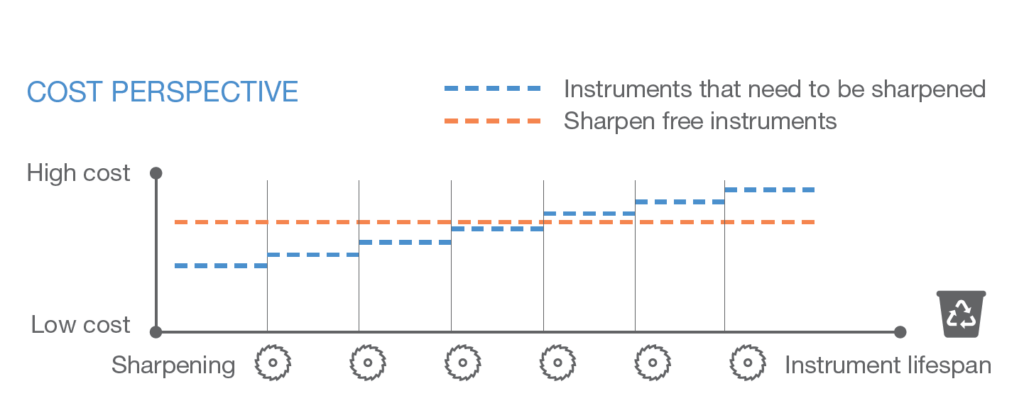
Switching from conventional to sharpen free instruments a small clinic allows to reduce costs significantly, even 10 000€, in one year.
The purchase price of sharpen free instruments is ~25% higher compared to conventional steel instruments that can be resharpened. However, the cost of sharpening services or doing it yourself, counting time, amounts to easily 5-10€ per sharpening. As a result, the price difference between sharpen free hand instruments and those that require sharpening becomes negligible already after approximately 3-4 sharpening sessions.
By choosing sharpen free hand instruments, the need for sharpening is eliminated. This not only saves valuable time but also reduces expenses, which can then be redirected towards more productive work.
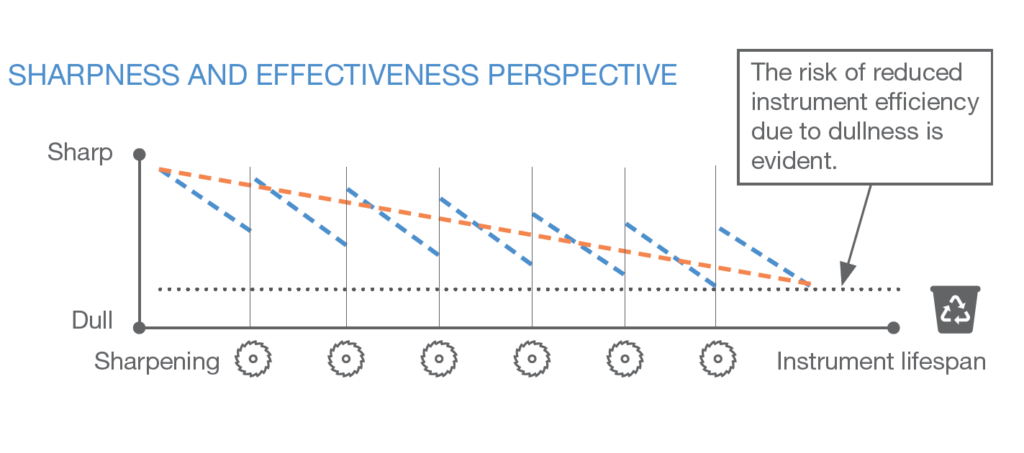
Sharpen free instruments can retain their sharpness for 82% longer compared to resharpening instruments, which tend to lose their sharpness more quickly.
Additionally, resharpened conventional instruments display greater fluctuations in sharpness over time.
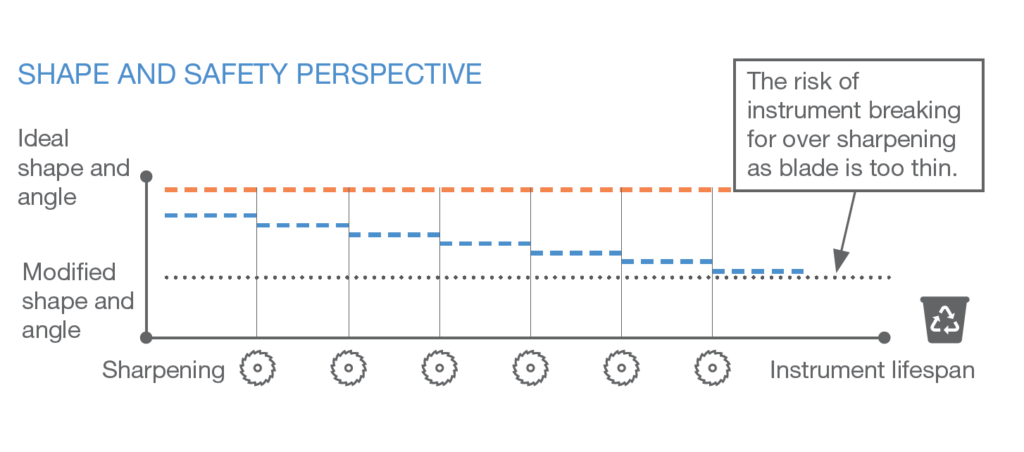
Sharpen free instruments maintain their original design, shape, and angulation consistently throughout their entire lifespan.
Excessive sharpening of instruments can alter the original cutting shape and angularity, which may lead to reduced instrument durability and increased risk of breakage.







